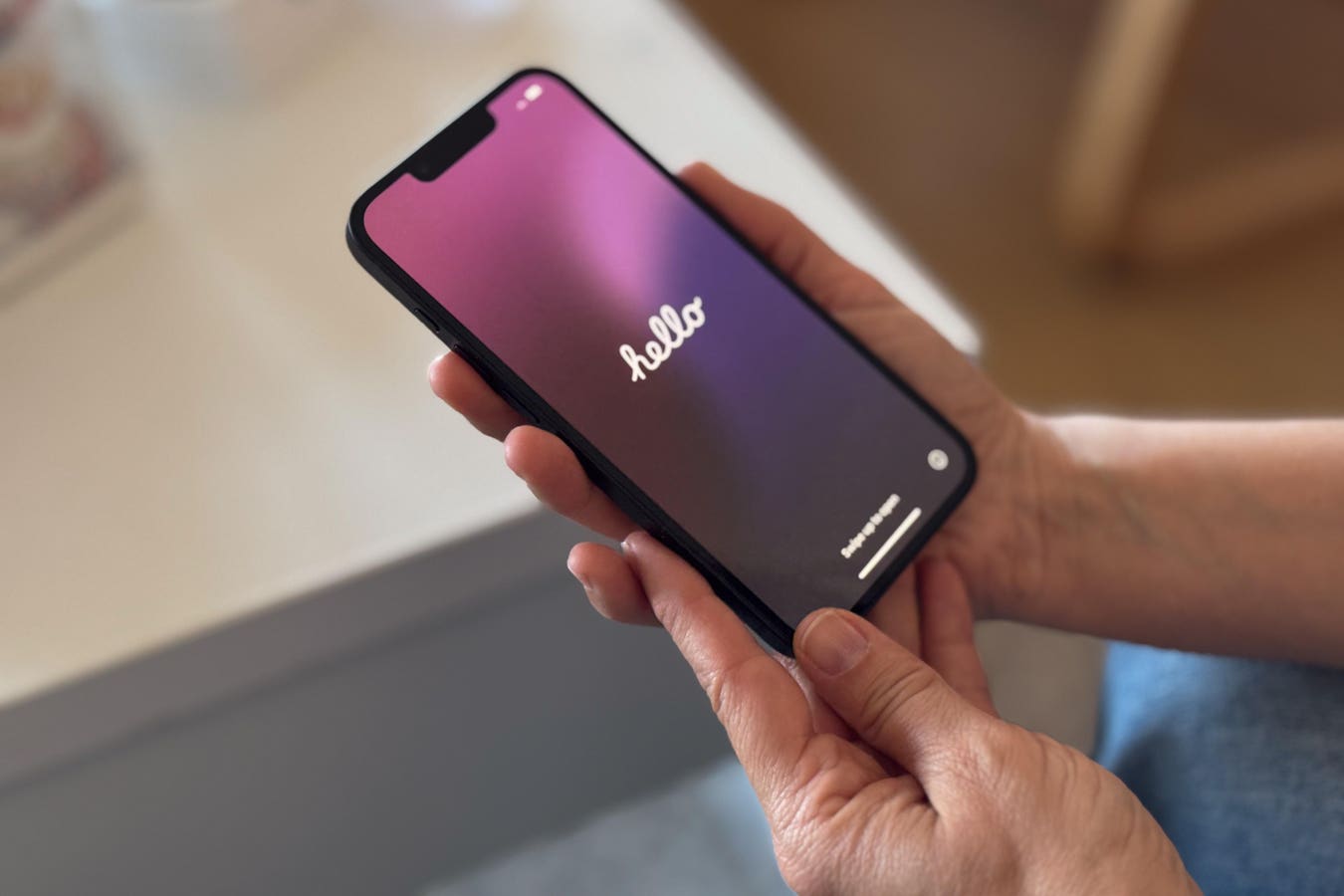Your feed might be quietly rewriting what “normal” looks like, selling the glamorized path as the standard. Here are three popular, but unhealthy ideas to be wary of.
getty
With social media ruling so many aspects of our lives, it’s hard to ignore the impact it has on how we see the world and what is considered the norm. Whether you realize it or not, it can dominantly shape what you consider desirable or acceptable. It can influence your career, relationship or even how you spend your free time.
In many ways, social media acts as a lens, often a distorted one, showing you only a curated version of people’s lives. It normalizes certain behaviors and lifestyles by making them look routine and glamorous, which increases their appeal.
Sometimes, it even makes them seem inevitable. For instance, when you are scrolling through feeds filled with perfectly edited “5 am or 6 am morning routines” or the habits of the so-called “that girl,” it can give the impression that to be successful, everyone must live this way. It can also make it seem like a normal schedule. Making imperfect mornings or even personal downtime seem like invalid options.
Essentially, your perception becomes strongly shaped by all the content you consume. Endless exposure to such polished snapshots can distort your sense of what’s normal, making extreme behaviors look ordinary.
Overall, social media creates an illusion that these choices are the standard path everyone must follow. In reality, many of these popularized behaviors aren’t as normal or universal as they seem.
Here are three unhealthy ideas social media has glamorized as normal.
1. Monetizing Your Hobbies
Hobbies exist for a simple reason. They are meant to be a source of joy and help you decompress. You get to recharge mentally and emotionally. Research consistently shows their role in reducing stress, lowering symptoms of anxiety and depression and improving overall life satisfaction by giving people space to reconnect with themselves.
Social media, however, has reframed this narrative. It has led to the popularization of the idea that every hobby must eventually make money. Influencers showcase side hustles, ideas for how to sell stuff you craft off etsy shops or stories of people who turned their art, writing, or craft into a side hustle. It almost seems like monetizing your passion is not just an option but the natural next step. It insinuates that you might be sitting on a gold mine and not making the most of it if you do not monetize your hobby.
A 2021 study published in PLOS One challenges this narrative. Researchers compared different communities with varying levels of monetization.
Contrary to expectations, the least monetized communities were found to have very high happiness levels, comparable to those in wealthy countries. As monetization increased, what made people feel happy shifted from simple and experiential pleasures (like enjoying nature) in less-monetized places to social and economic factors in more monetized ones.
This does not mean monetizing your hobbies is inherently wrong. For some people, it can actually be ideal. It can be empowering and even financially helpful. Sharing your art or any sort of hobby online can connect you with communities and create opportunities.
But it’s important to remember that monetization isn’t the only or even the main purpose of a hobby. You don’t have to measure your passion by how much money it makes or how many likes it gets. Hobbies are meant to enrich you, not exhaust you by the pressure of perfecting them.
If your hobby remains just a way to relax and feel alive, that is more than enough. And if recognition or reach happens to come as a byproduct, let it stay exactly that: a bonus and not the benchmark of your worth.
2. Constant Travelling
Travel has been long-celebrated for its ability to refresh the mind, broaden perspectives and enhance life satisfaction. Experiencing new places and cultures can spark creativity and foster personal growth. Even short trips or local getaways can provide a mental reset. This allows people to return to their daily routines feeling rejuvenated.
However, social media has changed travel from a personal experience into a public performance. It has contributed to a phenomenon researchers now call “travel dysmorphia” — the feeling that you haven’t seen enough of the world compared to others. This is a feeling experienced by many.
A recent survey of 2,000 U.S. adults by Talker Research on behalf of Scenic Group found that nearly seven in 10 Americans experience this. Less than half (48%) are satisfied with how much they’ve traveled in their lifetime. Social media posts from friends, family and influencers were cited by a significant portion of respondents as a key driver. Gen Z was especially affected: 47% said influencer content contributed to their travel dysmorphia and more than half felt like they were “behind” in life overall.
The survey also highlighted the emotional pressure behind this trend. Over a quarter of younger Americans admitted feeling embarrassed about their travel history. Only 10% feel they have achieved all of their travel goals.
There are common barriers like cost, work and family responsibilities that compound the pressure. This reinforces social comparison via social media, which is particularly stressful. This way, travel becomes more like a benchmark of success rather than a personal source of joy.
Additionally, a 2025 study published in Tourism Management highlights that more travel doesn’t always mean more happiness. Researchers explored how travel frequency impacts emotional intensity. Across a pilot study and five additional analyses, the researchers found an inverted U-shaped relationship, which means emotional satisfaction initially rises with more travel but declines when travel becomes too frequent, leading to emotional numbness.
Researchers also found that tourist expertise mediates this effect. Experienced travelers handle frequent trips better and introducing mystery or novelty in trips can alleviate the numbness caused by excessive travel.
Social media may make it feel like everyone must constantly be on the move. However, true benefits come from experiences that are meaningful to you and not from the sheer number of destinations visited or how photogenic the trip appears online.
Everyone’s approach to travel is different. Some people thrive on adventurous, fast-paced trips. Others may find joy in quieter and slower journeys that allow them to truly unwind and reflect. Your first priority should be to prioritize enjoyment and presence over perfection or quantity.
Travel is most rewarding when you prioritize what genuinely makes you happy. Learn to embrace quality and mindfulness over quantity or perfection.
3. Quitting Your Job To Be ‘Free’
In a digitally driven world today, freedom is often portrayed as leaving the traditional 9-to-5 behind and pursuing a life of entrepreneurship, travel or what has popularly come to be known as “soft living.”
Feeds are filled with influencers showcasing their aesthetically curated home offices and flexible schedules, emphasizing the thrill of being their own boss. Conventional work is now seen as restrictive.
Social media amplifies this with the “hustle culture rebellion.” A standard job has been framed as confining and soul-sucking. Stories of people quitting their jobs to chase passion projects are presented as aspirational milestones. Stable employment, on the other hand, is subtly portrayed as limiting or unambitious. The pressure to emulate these lifestyles can create the impression that staying in a traditional job is a failure or that you are doing something wrong with your life.
However, research published in Trends in Psychology shows that meaningful work doesn’t necessarily require quitting. Employees can proactively create fulfillment through “job crafting.” This means they modify their roles, tasks and mindset to meet their psychological needs.
Researchers studied 340 Brazilian professionals and found that autonomy and perceived opportunities to craft were the most direct paths to meaningful work. While cognitive crafting, that is, changing the way employees perceive and think about their work, exerted the strongest influence.
This demonstrates that meaningful work is often developed through a proactive approach, rather than by leaving a traditional job. By shaping their roles and mindset, employees can experience engagement and satisfaction within the structures they already have.
Freedom and fulfillment don’t require quitting everything. Leaving a job that no longer serves you can be a valid choice, but it’s important to approach the decision mindfully. Financial stability and a clear understanding of potential risks are essential to ensure the change is sustainable.
The point is to create meaningful experiences and exercise control over your work and life, not from extreme acts for social validation or simply imitating someone else’s choices. Everyone’s circumstances are different. What works for one person may not be feasible or sustainable for you. Without careful planning, quitting could increase stress and anxiety rather than providing relief.
Ultimately, what matters the most is honoring your individual experience rather than following what looks “normal” on social media or elsewhere. Making choices that genuinely work for you is what will be beneficial in the long run. And know that they don’t have to seem ideal to others. As long as they support your well-being and fulfillment, they are the right ones for you.
Take this science-backed test to learn whether your own scrolling habits on social media are helping or hurting you: Doomscrolling Scale









